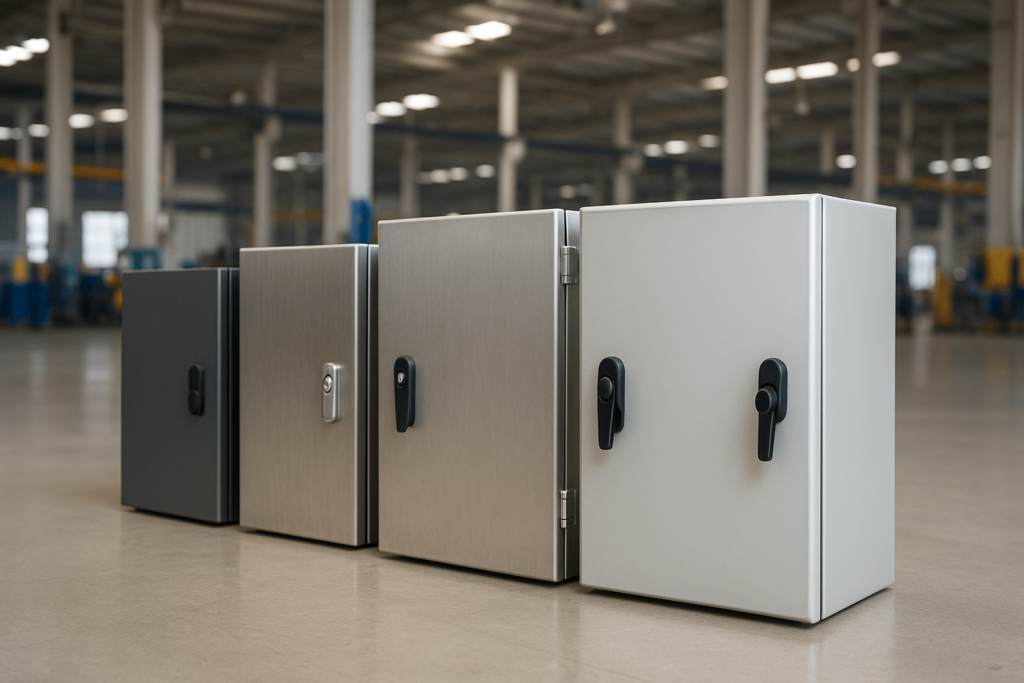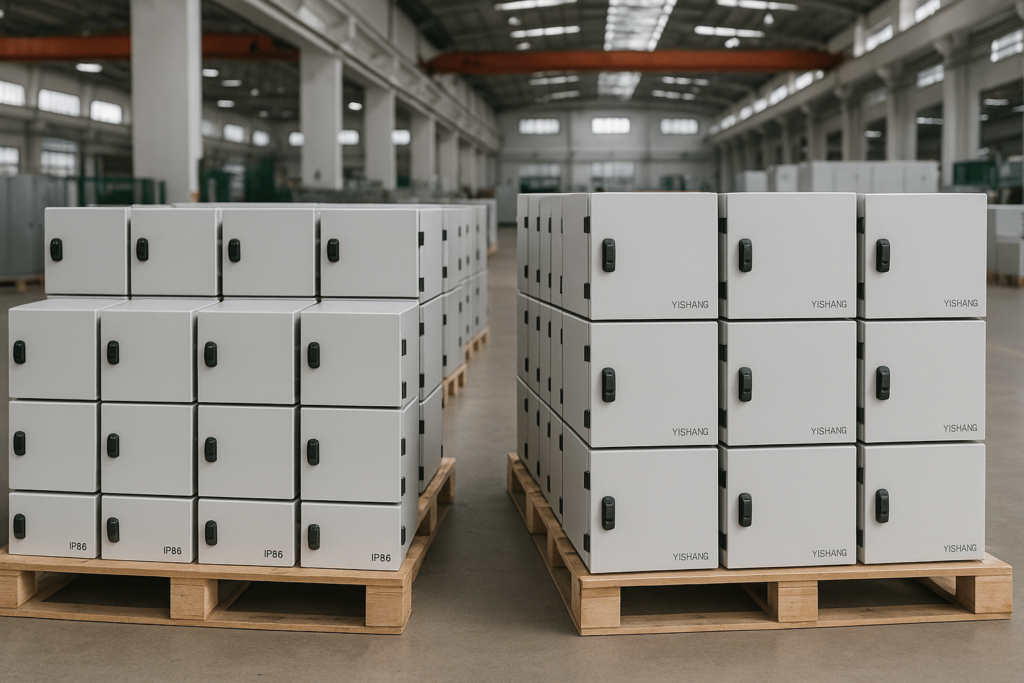When Locks Aren’t an Afterthought — But the Beginning of System Design
Procurement professionals evaluating enclosure systems for industrial infrastructure don’t just want a product — they want a solution that minimizes future risk. In high-volume scenarios like telecom rollouts or EV charging networks, a lockable electrical enclosure is not merely a container. It’s part of the long-term service and safety strategy.
A failed lock introduces avoidable risks — from maintenance disruptions to potential compliance violations. B2B buyers need to understand how locking systems fit within the entire enclosure framework — not as accessories, but as integral to structure, workflow, and lifecycle performance. That’s where design-phase planning becomes non-negotiable.
Locking strategies synchronized at the design phase help prevent downstream mismatches, minimize rework, and accelerate procurement cycles.
Understanding the Box: Structure, Stress, Access — Beyond Protection
International B2B buyers prioritize structure and longevity over decorative features. The question is not how a unit looks when new — it’s how it performs five years into a deployment.
Enclosures using cold-rolled steel below 1mm gauge may be lower-cost, but often deform in high-impact or high-vibration zones. For outdoor or mission-critical setups, procurement teams consistently specify 304 or 316L stainless steel, aluminum extrusion enclosure frames, or galvanized options with thicker profiles.
Thermal cycling, snow loads, or intense UV exposure can cause fatigue in hinges or warp access panels. Engineers reviewing specs should validate that components — especially locks — remain aligned under mechanical stress. For pole- or wall-mounted units, enclosure balance and weight distribution are additional review points.
Access mechanics also matter. Procurement specs should verify tool-free entry options, swing angles for high-density wiring areas, and safety during lockout/tagout. In electrical assy environments, poor access slows repair, risking contract penalties.

The Misconception of ‘Just Put a Lock On It’ — What Most Buyers Overlook
Among new suppliers, there’s a tendency to treat the locking feature as a secondary decision. But experienced OEM buyers know it can determine total lifecycle cost.
An aluminum enclosure with a premium lock is still vulnerable if the gasket seal degrades in field use. That’s why matching IP65 or NEMA 4X ingress protection to environment is key — especially in food & beverage, coastal, or industrial zones.
Locking security should scale with risk exposure — high-traffic areas may require smart systems that link into broader access platforms. For low-risk indoor environments, cost-effective cam locks may suffice — but that decision must be intentional, not habitual.
In field-heavy operations, buyers should also consider ergonomics. Locks that require special tools or don’t align with technician habits lead to workarounds. The risk? Staff may bypass the system entirely, defeating security intent.
Designed for Access, Not Just for Defense — Unlocking Workflow Efficiency
When deploying thousands of enclosures across a country or region, serviceability becomes an operating cost multiplier. B2B buyers know that what seems like a small design decision — a latch, hinge, or door width — becomes massive in scale.
Top-tier enclosure suppliers like YISHANG incorporate access-centric features: gas-spring panels, removable inner doors, tool-free entry zones. These details shorten service windows, reduce technician fatigue, and comply with safety protocols in sectors like energy storage or traffic control.
In regulated markets, smart locking systems not only enhance security but streamline access auditing — a growing requirement. Buyers increasingly request RFID control panel enclosures with weatherproof sealing that integrate seamlessly with broader asset tracking systems.
Procurement teams assessing large-scale bids should validate whether the enclosure vendor provides CAD drawings, access simulations, or can accommodate future field modifications. These touchpoints impact installation cost and end-user satisfaction.

The Anatomy of a Professional-Grade Lockable Enclosure
Sourcing managers comparing suppliers need more than price lists — they need clear distinctions between budget-grade and professional-grade hardware. The following table highlights what separates high-volume utility enclosures from generic industrial boxes:
| Feature | Entry-Level Enclosure | Professional-Grade Enclosure |
|---|---|---|
| Material | Mild steel <1mm | Stainless/aluminum ≥1.2mm or extruded aluminum profile |
| Locking | Basic cam or latch | Smart lock, RFID, or multi-point compression |
| Surface | Spray painted | Powder-coated, anti-fingerprint, corrosion resistant |
| Seal | Glued or taped gasket | Injection-molded EPDM or multi-stage sealing |
| Compliance | Internal QA only | Third-party IP/NEMA/UL/ISO verification |
| Maintenance | Not service-optimized | DIN rail, cable ducts, modular panels included |
For procurement professionals — especially those seeking a bulk lockable IP66 enclosure manufacturer — supplier transparency is key. Ask for test certifications, sample enclosures, or long-term field data. Enclosures deployed in thousands should meet consistent manufacturing tolerances. Common configurations requested by buyers include lockable stainless steel cabinets for electrical control and OEM enclosure boxes for outdoor equipment.

Beyond Function — When Enclosures Become Part of Your Brand
In public-facing or customer-interfacing applications, enclosure design moves beyond protection into branding. Whether for parcel lockers, EV stations, or digital kiosks, the enclosure becomes a visual signal of product quality.
Procurement teams aligning hardware with brand standards benefit from vendors who support custom outdoor aluminum cabinets for telecom, along with options like color coating, surface etching, or modular design. Suppliers like YISHANG offer OEM and ODM support — including engraved logos, backlit window ports, or display-grade surface finishing — for procurement teams seeking branded enclosure aesthetics.
At scale, consistency pays off. Matching cutout layouts, cable routing schemes, and latch systems across product families reduces installer training and improves customer recognition. Strategic buyers request uniform SKUs with scalable customization options, often including industrial-grade enclosures with compression latches for added durability and tamper resistance.
Closing the Loop: What to Ask Before Approving the Next Box
Before closing your next enclosure order, align the technical checklist with real deployment risk. Here are five procurement-aligned checkpoints:
Does the lock type align with service intervals, compliance, and field user needs?
Can the enclosure accommodate future retrofits like sensors or display modules?
Are locking points and hinge lines protected from deformation under weather or force?
Has the vendor provided compliance data for IP, NEMA, or UL where required?
Do design tolerances support rapid install and long-term access without rework?
Global sourcing for electrical enclosures is no longer just about cost. It’s about lifecycle performance, compliance, and deployment readiness at scale.
Need a scalable, branded, and compliant enclosure solution? YISHANG supports bulk OEM projects with CAD-ready design and fast prototyping. Contact us for a tailored quote.

